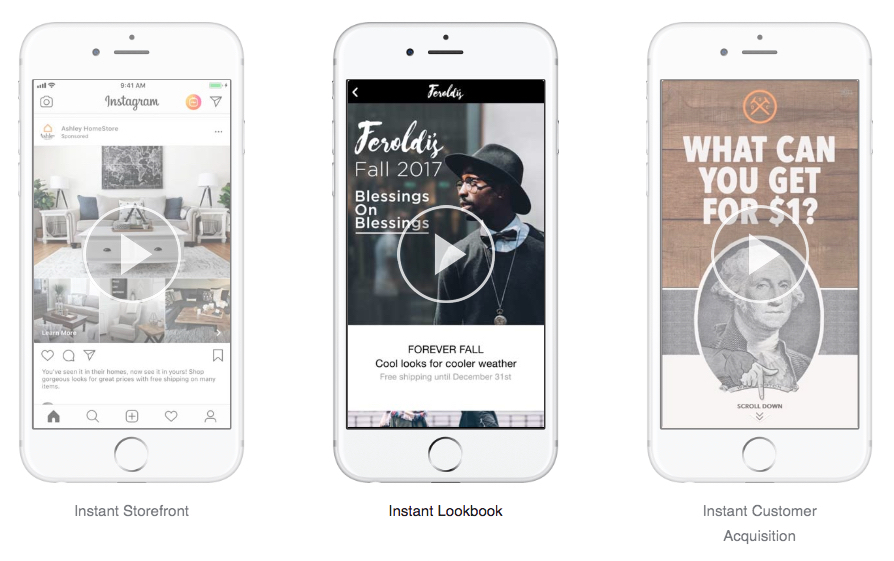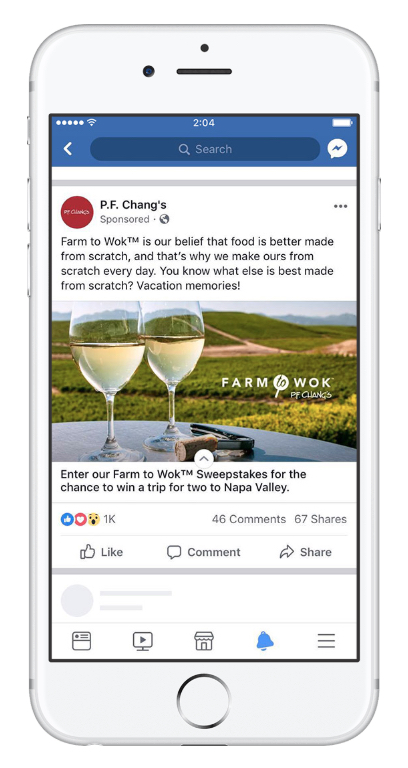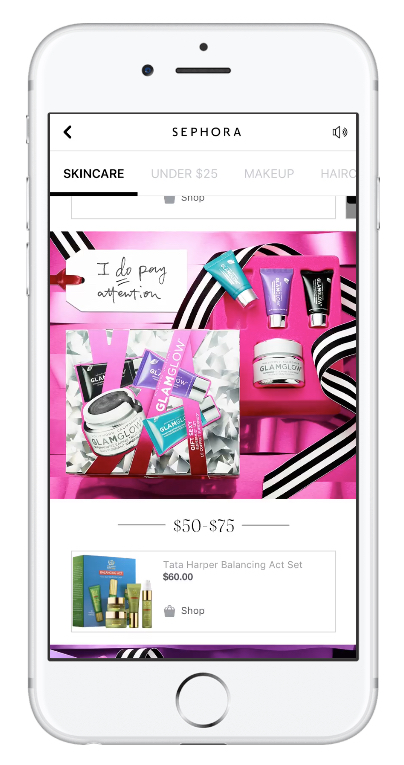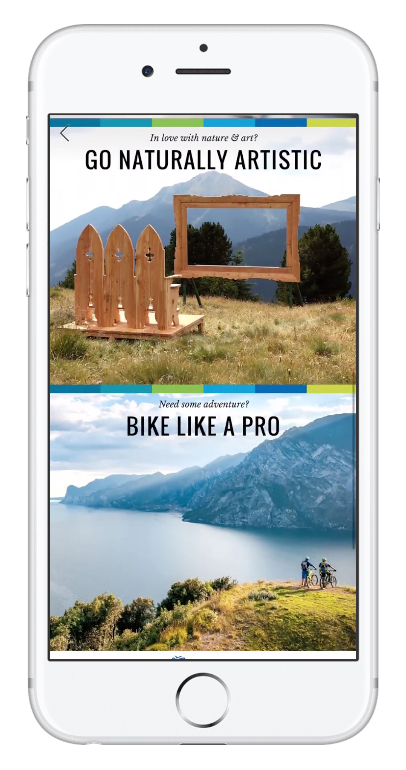Facebook’s Canvas ads are now Instant Experience ads. The full-screen ad format, out since 2016, leverages the high rate of social media app usage among mobile users while simultaneously providing a solution to slow loading mobile pages.
Users spend as much as 90% of the time on their phones within apps — compare that to 10% on mobile sites. In addition, as many as 53% of users navigate away from a mobile landing page if it takes longer than three seconds to load.
These two things combined would otherwise spell bad news for many clients’ pay-per-click (PPC) ad budgets. But like its predecessor Canvas ads, Instant Experience ads are mobile friendly, fast loading, and media rich.
However, the update to Facebook’s immersive ad format is more than just a name change. In this article, you’ll learn what’s new, what industries the change benefits, and how you can optimize your marketing with Instant Experience ads.
What’s new with Instant Experience ads versus Canvas?

Instant Experience improves upon Canvas in three key areas:
- Increasing the number of design options
- Adding re-engagement functionality
- Analytics capabilities
The most noticeable are the design options. Facebook previously rolled out several immersive and dynamic templates that clients can build their ads with, including:
- Instant Lookbook: ideal for fashion or other ecommerce products
- Storytelling: focuses on video
- Instant Storefront: mimics the layout of a lifestyle magazine
- Customer Acquisition: functions as a mini landing page with a clear CTA button
However, these templates lack the ability to immediately convert Facebook users without funneling them to your mobile site. Of course, mobile sites usually carry longer load times, so bounce rates could increase.
Instant Forms aim to fill that gap. With Instant Forms, you can gather contact information and capture leads without having to navigate users away from the app.
Re-engagement has also never been easier because Instant Experience automatically comes bundled with Meta Pixel. If you attach the pixel on your site, this makes it incredibly simple to re-engage with visitors who previously interacted with your ad.
Finally, you have more ways to track and analyze your campaigns.
Facebook allows you to attach third-party pixels to Instant Experience ads so you can measure the success of your campaigns with your analytics tool of choice. This is especially useful to compare the results of two different campaigns, allowing you to A/B test and optimize at every step of your funnel.
The pros and cons of using Instant Experience
Although Instant Experience has only been around under the Canvas name since 2016, the stats and functionality are already impressive. Any weaknesses are minor, with Facebook already hard at work on solutions.
Pro: Instant Experience ads are fast
In early 2017, Google released research stating the average time it takes to load a mobile landing page fully is 22 seconds, but that 53% of visitors are likely to leave the page if it takes longer than three seconds to load.
But by Facebook’s own account, Instant Experience ads load 15x faster than mobile websites. This could potentially spell out substantial savings for anyone investing in pay-per-click ads.
Pro: People view Instant Experience ads for longer
When Instant Experience first debuted under the Canvas brand, early tests showed that 53% of users view at least half of the ad. Average view times clocked in at 31 seconds, while users viewed the top-performing ad for over 70 seconds. So not only are more people likely to see the ad, there’s a good chance they’ll stick around longer.
Pro: You can convert users inside the app
Before Instant Experience, if you wanted to collect contact information (i.e., generate leads) users had to navigate away from the app to your mobile landing page, adding a step in the process.
Thanks to the new Instant Form template, you can gather leads without ever having to direct users away from Facebook.
Con: Users can’t make purchases in Instant Experience ads
One of the most desirable functions, especially for ecommerce brands, is for users to make purchases directly within the ad. As of October 2018, this function isn’t available.
Con: Ads are only as good as their designer
This may seem like common sense, but it’s worth mentioning. Instant Experience ad templates give more room for customization than Facebook’s traditional ad formats, but this also means more room for design error, such as too much copy or low-resolution imagery.
Fortunately, Facebook’s help center provides several tips and specifications on how to make the most of your Instant Experience ad.
What industries benefit most from Instant Experience ads?
One look at Facebook’s list of success stories shows that just about any industry — real estate, recruiting, or ecommerce — can benefit from using Instant Experience. Take a look at a few of the most surprising success stories below:
P. F. Changs demonstrated that even though their establishment offers an offline experience, online ads can work for a restaurant. The company created two separate campaigns for their travel sweepstakes, one funneled users to their site and one focused on conversions within an Instant Experience ad:

The results were impressive in that the conversion ad campaign resulted in 73% lower cost-per-click than driving traffic to their website.
Next, Sephora used Instant Experience to increase their holiday product awareness and drive both in-store and online sales. Not only did the full-screen format highlight their products beautifully, but the ads could target users and curate the products they saw in the ad:

As a result, Sephora saw a 32% increase in returns on their initial ad investment compared to previous digital campaigns. They also saw a 41% increase in click-through rates compared to previous campaigns and a 30% increase in reach over their campaign goals.
Finally, Trentino Marketing aimed to increase awareness of the province of Trento in Italy and increase tourism. To do this, they used video ads and a retargeting campaign to reach over 13 million people across Europe and the US in four months:

Not only did 1.5 million users view the video ads in full, but Trentino Marketing also experienced an 18.4% increase in search traffic on branded keywords after the campaign.
Instant Experience ad specs
Don’t feel overwhelmed by the increase in design options with Instant Experience ads. Facebook provides numerous guidelines to make sure you succeed. Here are a few to help you get started.
Video specs
- Ratio: 9:16 to 16:9
- Recommended Resolution: Upload the highest resolution video available that meets file size and ratio limits.
- File Size: 4GB Max
- Video Length Minimum: 1 second
- Length Maximum: 240 Minutes
- Video Captions: Optional but recommended
- Video Sound: Optional but recommended
- Text: 125 characters
- Thumbnail images that consist of more than 20% text may experience reduced delivery.
- Vertical videos (with aspect ratio taller than 2:3) may be masked to 2:3
Image specs
Just because Instant Experience ads are viewed on mobile doesn’t mean you should upload smaller pictures for your ad. The full-screen format means users will see all the little details, so high-quality files are a must.
- File type: jpg or png
- Image ratio: 9:16 to 16:9
- Recommended resolution: Upload the highest resolution image available.
- Images that consist of more than 20% text may experience reduced delivery.
- Text: 125 characters
- Images cropped to 1.91:1
- Recommended resolution: at least 1,200 x 628px
- Minimum Image Width in Pixels: 600
- Minimum Image Height in Pixels: 600
For more tips, including recommendations for copy length and visual design, visit the official Facebook Ad Guide.
Will you try Instant Experience ads?
This revamped ad type is certainly interesting but it does have its limitations. For starters, they are only applicable to mobile devices. Second, multi-step forms are not allowed and you can’t offer digital asset delivery. Dynamic text replacement and omniture lead routing are non-existent and design capabilities are lacking.
Not only does a landing page platform like Instapage come equipped with all of that, but also 40+ integrations, engagement insights with heatmaps, content management with global page blocks, team member visual collaboration, advanced A/B testing, custom on-brand fonts, and customer success. Sign up for anInstapage 14-day free trial today.

Try the world's most advanced landing page platform with a risk-free trial.
